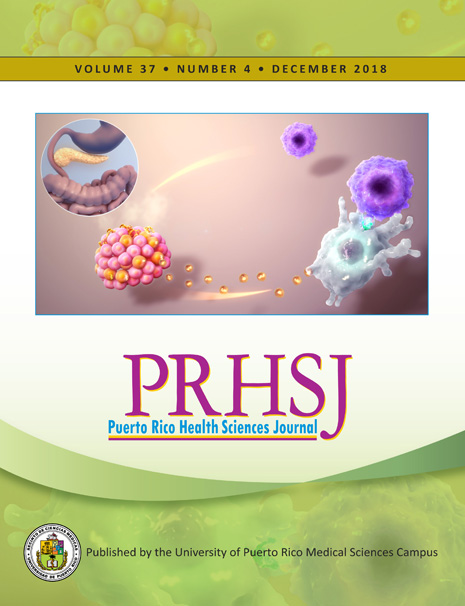Abstract
Objective: Temporary intravascular shunts (TIVSs) are commonly used as a damagecontrol procedure in trauma settings. Currently, there is scarce literature in the civilian field, and what there is is limited to large trauma centers with multiple resources. Therefore, we aimed to describe TIVS usage, and the outcomes of that usage, at Puerto Rico Trauma Hospital. Materials and Methods: This is a case series conducted from 2009 to 2013 with 32 patients who suffered vascular trauma, of which 13 needed TIVSs. Data related to age, trauma mechanism, injured vessel, type of shunt, Glasgow Coma Scale, vital signs, and mortality were collected. The analysis was carried out using descriptive statistics. This protocol was approved by the IRB of the Medical Sciences Campus. Results: The most frequent mechanism of injury was a gunshot (11/13; 84.6%). The most commonly injured vessel was the superficial femoral artery. Indwelling time ranged from 6 to 96 hours. Only 2 of the 13 (15.4%) patients with shunts reported thrombosis. Furthermore, we performed 4 (30.7% of the patients) prophylactic fasciotomies and 4 (30.7% of the patients) amputations; 4 of the 13 (30.7%) patients died from unrelated causes. Conclusion: Our results are consistent with those in the literature, which supports our contention that a TIVS can be an effective component of damage-control vascular surgery and can, in both military and civilian settings, aid in extremity amputation prevention. Furthermore, it has been established that a TIVS can be fashioned from any available hollow tube. However, further research is needed to evaluate the safety of an improvised catheter of this nature.
Authors who publish with this journal agree to the following terms:
a. Authors retain copyright and grant the journal right of first publication with the work simultaneously licensed under a Creative Commons Attribution License that allows others to share the work with an acknowledgement of the work's authorship and initial publication in this journal.
b. Authors are able to enter into separate, additional contractual arrangements for the non-exclusive distribution of the journal's published version of the work (e.g., post it to an institutional repository or publish it in a book), with an acknowledgement of its initial publication in this journal.
c. Authors are permitted and encouraged to post their work online (e.g., in institutional repositories or on their website) prior to and during the submission process, as it can lead to productive exchanges, as well as earlier and greater citation of published work (See The Effect of Open Access).
